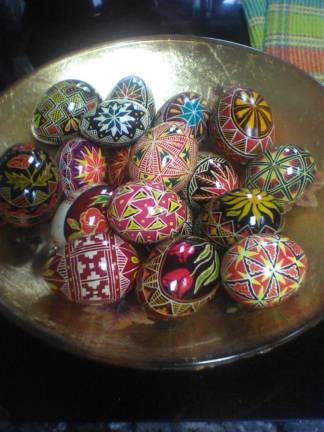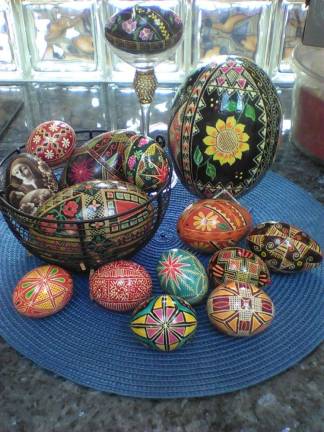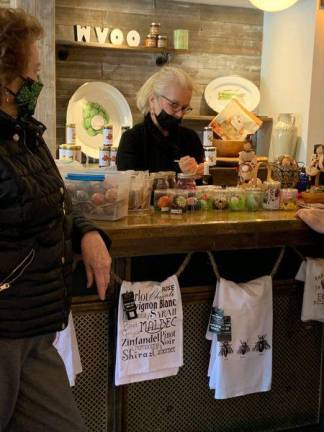‘The Great Day’: Add Ukrainian Easter traditions to your holiday
Culture. Ukrainian food, fun, and games will enrich every celebration. And don’t be afraid to try some of those artful eggs: with some guidance, you’ll be well on your way to creating your own Easter masterpieces.



Easter, or Velykden (“The Great Day”), is celebrated in Ukraine with an array of traditions.
Easter in Ukraine follows the Orthodox Christian calendar; it falls one week after the Catholic holiday (Orthodox Easter this year is April 24; other Christians celebrate on April 17).
Holy Week begins on Willow Sunday, when the faithful decorate their homes with willow switches. Then begin the all-important weeklong food preparations.
Food
Food is the focal point of most holidays, and Easter in Ukraine is no exception. The week before is spent preparing traditional dishes.
The season begins with Lent, when Orthodox Christians give up eating animal products — meat, dairy, and eggs.
The foods eaten on Easter are are not only delicious but symbolic:
● Paska — Easter bread — represents the joy of the new life given by Jesus Christ.
● Kielbasa — a spicy pork sausage — is a reminder of God’s love.
● Horseradish symbolizes the Passion, the crucifixion of Jesus Christ.
● Eggs represent life reborn. Speaking of eggs...
Pysanky and krashanky
The decorated Easter eggs of Ukraine are world-famous for their intricate designs and sumptuous use of color. Each one is a work of art.
These ornate eggs have two variations: pysanky and krashanky.
A pysanka (singular of psyanky) is made with a raw egg: Drill a small hole at the bottom and let it drain completely. In this way, the egg can be preserved.
Pysanky are covered in hand-drawn designs that have religious and natural themes. The name derives from “pysaty,” meaning “to write.” This craft is passed down from generation to generation.
A krashanka (singular of krashanky) is made with a hard-boiled egg so that they may be eaten at the Easter feast. These eggs are usually far less intricate.
Locally
If you want to learn the art of pysanky while also supporting Ukraine in its present crisis, Goshen Green Farms in Goshen, N.Y. (goshengreenfarm.com), is holding a workshop from 11 a.m. to 2 p.m. on Saturday, April 16. The cost is $50, with all proceeds going to the people of Ukraine.
Daria Bonomini is resuming Ukrainian egg decorating classes at Warwick Valley Olive Oil Company and at the Hotel in Crystal Springs.
"Ukrainians continue this artwork throughout the world and have done it for centuries,” said Bonomini.
Baskets
In Ukraine, you’re less likely to find a basket filled with chocolate bunnies or plastic eggs hiding candy and coins.
Instead, Easter baskets are filled with the foods to be eaten later in the day — the paska, kielbasa, krashanky, and all the rest — and taken to church in the morning to be blessed.
Games
There is no Easter Bunny or elaborate egg hunts in Ukraine. But Ukrainians have their own fun, with every family playing their own games to celebrate.
One popular game is known as “Egg Knocking,” or “Egg Battles.” The rules are simple: Each combatant chooses an egg, then uses it to crack the others. When your egg cracks you have to eat it, and you’re also out of the game.
Imagine, after many weeks of a restricted diet, the sight of a gorgeous Ukrainian table spread, with its array of tempting dishes.

